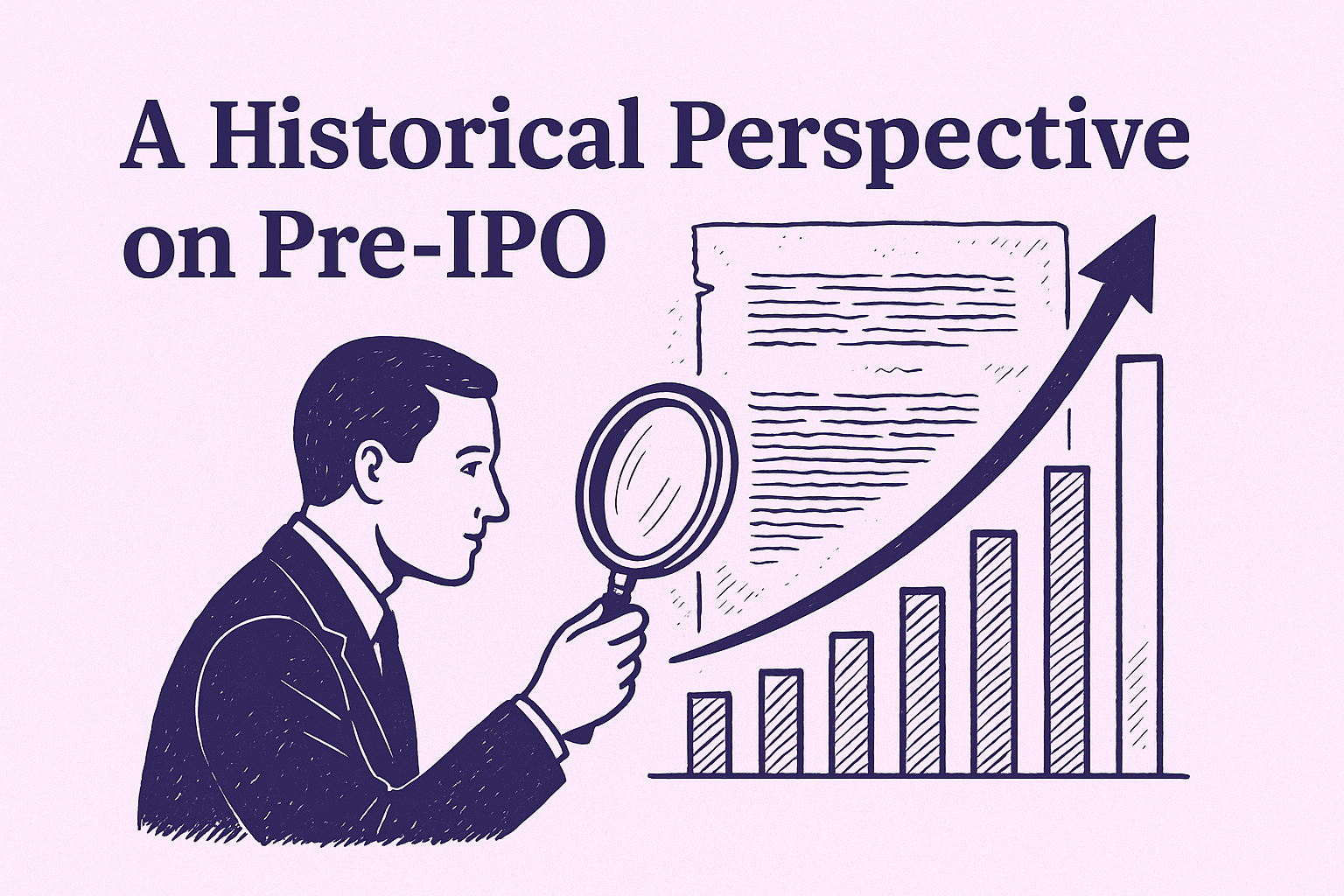
Many of us have heard of the term IPO. The Zomato IPO has played a crucial role in it. During the COVID-19 pandemic, people became more familiar with the stock market. In March 2020, there were approximately 40 million demat accounts in India, and by March 2024, this number had increased to 185 million. But more astonishing is how people think, “Pre-IPO is a new trend or fad in the investment sector.”
That's why this blog series is going to be an eye-opener for all investors, stock market traders, or enthusiasts. Pre-IPO can be called the fundamental economic engine. It gave birth to many interconnected economic institutions, which changed localized, rudimentary commerce into a complex financial market. So it is very important to understand the historical trajectory of pre-IPO.
The ancient economy was mainly dependent on agricultural products. Other products were mostly handmade. Business funding was done by family members, friends, landlords, and bureaucrats only. Funding from other sources was looked down on & considered taboo. Funding from wealthy and powerful people was a deal with the devil. With funding came regressive conditions that were unjustified and limited progress.
There is no sudden or particular incident of invention. It was gradual developments that led to the invention. Some evidence of shared ownership or pre-IPO or stock market existed in ancient Rome, Venetian culture, and Belgium. Some scholars have claimed that in ancient Rome, “societates publicanorum" (organizations performing government services) had tradable "partes," or shares, whose price fluctuated with the completion of projects. Venetian moneylenders used to sell debt issues. This somehow laid the groundwork for pre-IPO.
After the 16th century, international trade was flourishing, and many expeditions were being planned. These expeditions were funded by the imperial people. In return, a bigger share of the profit was used to go to them, and in case the expedition went into a loss, the initiator was heavily punished; their assets were sealed.
Now, as international expeditions turned out to be profitable, more and more voyages were getting planned and on bigger scales. But there was a problem with funding; established sources were now unable to fund all the expeditions. This gave birth to the concept of shared ownership, an early form of pre-IPO or private equity or IPO.
This was first implemented by Johan van Oldenbarnevelt, a key Dutch statesman who played a crucial role in its implementation. He convinced imperial authorities to open doors for investors outside the royal circle to fund voyages of the Dutch East India Company (Verenigde Oost-Indische Compagnie, VOC). He told them it would help the nation to build wealth and flourish economically.
The invitation for investment went to “all the residents of these lands” with no minimum or maximum limit. Invitation, in a way, broadened the venture capital arena. The main objective of this decision was to fund a high-risk, high-profit venture.
The decision was a turning point in the history of finance. Eventually, when they experienced what shared ownership could achieve, they never stopped it. It became so popular and profitable that royal entities from other nations wanted to implement it. Queen Elizabeth I implemented it with the British East India Company.
Innovation of pre-IPO has facilitated not only globalization but also interconnected complex financial institutions, technological innovation, and democratization of venture and corporate funding. But this also led to the worst financial mistakes.